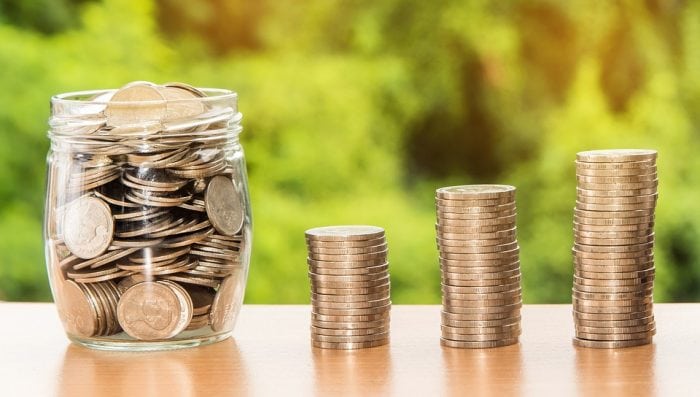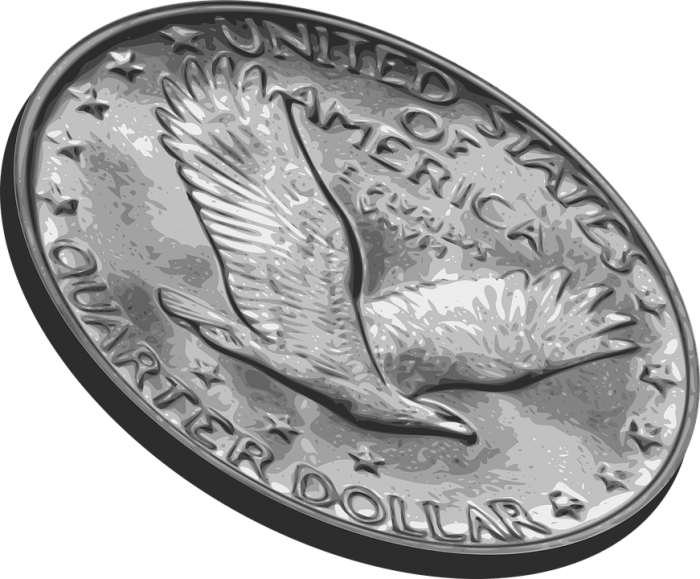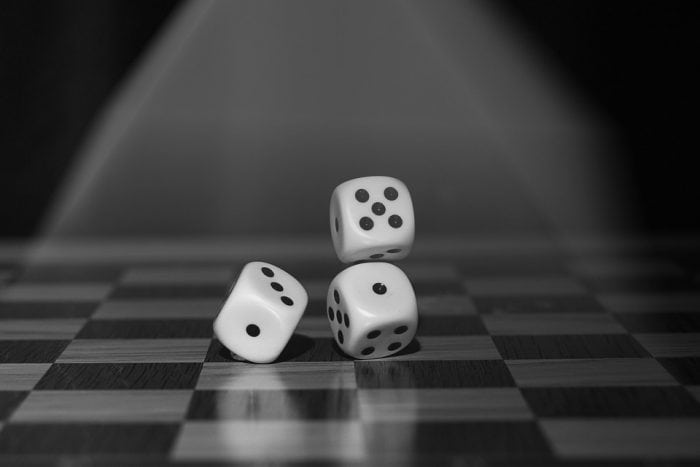A Person Has 2and Bets 1 on the Flip of a Coin and She Continues to Bet 1 as Long

If you flip a coin, there's a fifty percent chance (probability) the coin will land on heads a fifty percent chance it will land on tails, everyone knows this. Yet w hat is the probability that you would get two heads in a row if you flipped the coin twice?
What about three heads in a row, or four heads in a row? What is the probability that you will roll two sixes in a row if you rolled a dice twice? This discussion of basic probability will explain how you can determine the odds in simple probability problems and explain some important probability concepts.
Probability And Coin Flips

Photo: zsunberg via Pixabay, CC0
One of the most common probability questions involving coins is this: "Let's assume that you flip a coin five times and the coin lands on heads all five times. What is the probability that the coin will land on heads again?"
The answer to this is always going to be 50/50, or ½, or 50%. Every flip of the coin has an "independent probability", meaning that the probability that the coin will come up heads or tails is only affected by the toss of the coin itself. The coin has no desire to continue a particular streak, so it's not affected by any number of previous coin tosses. The idea that a series of outcomes in a probabilistic scenario will continue simply because one is "on a roll" is closely related to the Gambler's fallacy.
Here's another common question in probability: "If you were to flip four coins, what are the chances that they would all come up heads?"
In this situation, you have four coins that are all independent events. So in this case, the correct calculation to determine the probability is:
½ x ½ x ½ x ½ = 1/16
Every flip of the coin doesn't depend on the other coin flips, and we are dealing with a situation where one thing must occur as well as several other things. This is an "and" situation. When dealing with "and" situations, you must multiply the probabilities together. Remember, "and" means multiplication. Every flip has a probability of ½, so when these probabilities are multiplied together the probability of getting all heads on four coin flips is 1/16.
What if you were asked for the probability that a coin would come up heads four times in a row if a coin was flipped 20 times in a row? As seen in the smaller example above, there should be an "and" condition for every one of the twenty flips. So we're looking for the probability of:
(½)^20 , which can be expressed as 1/(20)^20
Essentially, when doing this computation we are computing the value of ½ times ½ times ½, etc. repeated 20 times. You can apply this formula to any number of times a coin is flipped if you're looking for the same outcome anytime, just fill in "N" with the number of times you flip the coin:
(½)^N
Note that while the odds of getting heads twenty times in a row are extremely low, approximately one in a million, if we had every American conduct this experiment many people would actually find that they were successful in getting twenty heads in a row, because of the sheer amount of people doing the experiment. Remember this when unlikely events seem to occur, that there are millions of events taking place every day and we just pay attention to the ones that are relevant to us.
Dice Probabilities

Photo: 955169 via Pixbay, CC0
Let's move on to calculating dice probabilities. The probability of one side coming up on a dice are slightly more complex than the probability that a face will come up on a coin, but still fairly simple to understand. The easiest case to examine when calculating probability with dice is the odds that a side will come up when throwing a single die. If you're looking for the probability that a six will come up when you throw a die, use the following formula:
Probability = Number of desired outcomes/number of possible outcomes.
So the odds for rolling a specific outcome, no matter if that outcome is 1, 4, or 6 is just calculated by:
Probability = ⅙ = 0.167
Remember that probability 0 is no chance, while probability 1 is a sure thing. If you want this number as a percentage, just convert the decimal into a percent, by dividing the denominator of the fraction into the numerator. The chance of rolling a 6 on a die is 16.7 percent, and this is also the probability of rolling any other face of the die. So what are the chances of rolling two sixes in a row? It's the same principle as the above example with the coin flips, these are both independent probabilities that we are examining. So the probability of getting 6s on a die in a row is just the probability of the first outcome multiplied by the probability of the second outcome.
The probability of rolling two sixes in a row = ⅕ x ⅙ = 1/36
Now simply divide 36 into 1 to get 0.0278, or expressed as a percentage – 2.78%.
How would the probability change if we wanted to know the probability of getting two different numbers on a die? If you wanted to know the probability that you would roll a two and a three on both rolls of the die, just think about it in this sense: You're interested in two different outcomes, and these outcomes don't have to occur in a specific order. This means that if you're interested in getting a 2 or a 3, the calculations break down like this:
Probability = num of desired outcomes / num of possible outcomes = 2/35 = 0.0556.
Or as a percentage, 5.56%.
What about if you wanted to know how likely it would be that you would get a certain score by rolling two or more dice, you could use the same formula you have been to determine this. Note that it can be rather complicated, however, to count up all the possible outcomes that would give you the number you are interested in achieving. For instance, if you are interested in getting a 4 or a set of two dice, you could do this by rolling 2 2s, a 3 and a 1 or a 1 and a 3. Note that 1 and 3 and 3 and 1 are separate outcomes, you have to consider both of the outcomes separately.
suttoncloonstaked98.blogspot.com
Source: https://sciencetrends.com/flip-a-coin-basic-probability/
0 Response to "A Person Has 2and Bets 1 on the Flip of a Coin and She Continues to Bet 1 as Long"
Post a Comment